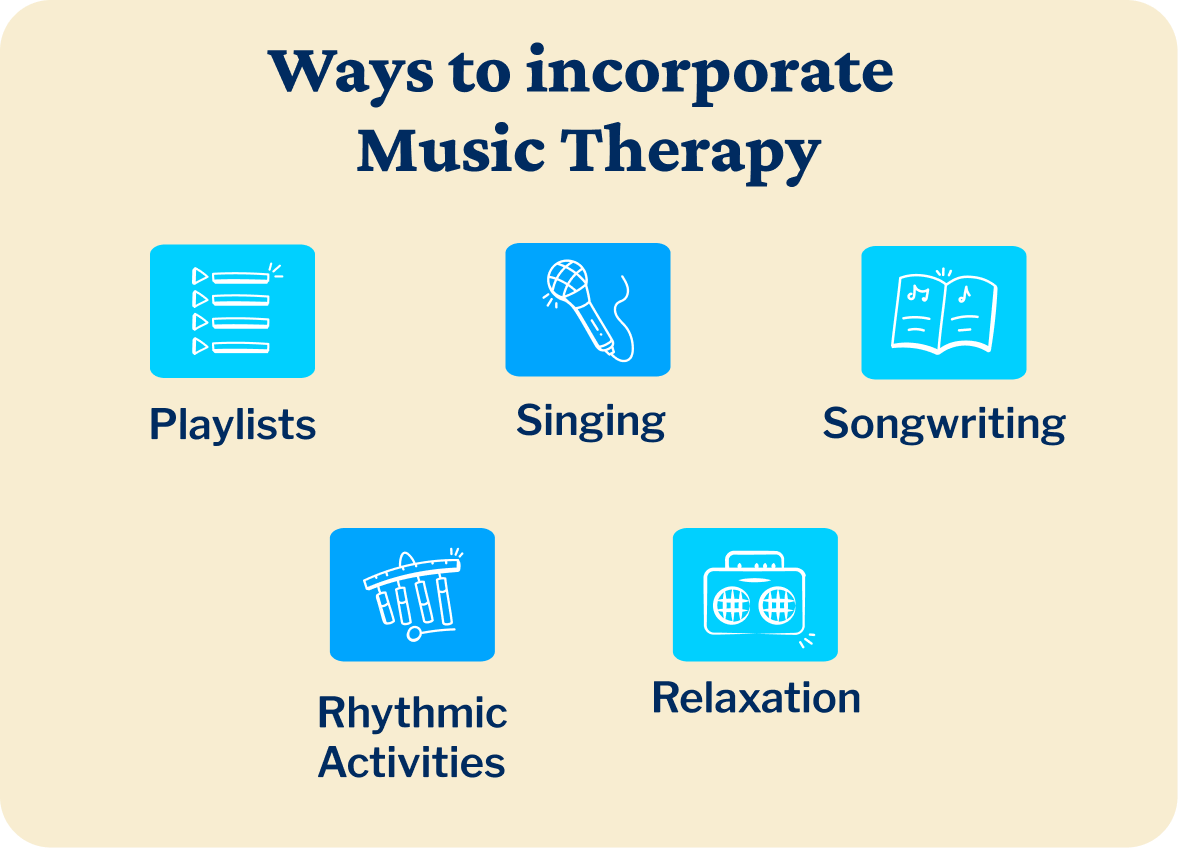Dementia isn’t one specific disease, but rather a progressive set of symptoms stemming from disorders in the brain. It can impact memory, cognitive function, behaviour and overall brain function.
- More than 400,000 people in Australia are living with dementia
- Experts believe that number could more than double by 2058
- No two people experience dementia the same way, and there is currently no known cure
- The most common types of dementia include Alzheimer’s Disease, vascular dementia, Lewy Body Disease and frontotemporal dementia
The progressive nature of dementia means symptoms—such as memory loss, cognitive decline and confusion—often begin slowly with mild cognitive impairment in the early stages and worsen over time.
However, healthcare professionals, medications and interventions such as music therapy can help manage symptoms of dementia, meaning many people living with it often maintain a high quality of life after their diagnosis.
What is Music Therapy
Music therapy is a specialised treatment that uses music to improve a person’s wellbeing. Unlike music lessons, musical therapy experiences aim to achieve non-musical goals focused on health and overall function.
There are two types of music therapy.
Active music therapy has participants produce musical sounds through singing, songwriting, playing instruments and improvisation. Receptive music therapy is a guided listening practice.
Music therapists often combine these techniques during music therapy sessions, but they can also be used in home settings by carers who are looking after loved ones living with dementia or Alzheimer’s Disease.
How does music therapy work for dementia patients?
Music interventions have become increasingly popular treatments, including for mental health conditions, Autism, and neurological disorders such as Parkinson’s Disease. For people living with dementia, the effects of music therapy can be multi-faceted.
Cognitive Benefits of Music Therapy: A Full-Brain Workout
Music therapy stimulates the entire brain. Though dementia and Alzheimer’s Disease are progressive, the neurological pathways for musical perception, emotion and memory remain intact longer than other executive functions. That means music can evoke appreciation, perception and awareness more effectively than other treatment options, even for dementia patients who’ve lost their language.
Emotional Benefits: Improved Mood, Confidence and Connection
The emotional impact of music therapy often revolves around communication: it provides a non-verbal means of expression, which empowers people living with dementia to connect with others in ways that were previously lost. Musical memory is also strongly linked to times, places, people and events in our lives, so it can drum up moments from the past and reinforce a person’s autobiographical recall—and their self-identity.
Evidence of Effectiveness
The research supporting music therapy’s efficacy has grown in recent years, and though more research is needed to understand the long-term benefits of music therapy interventions, clinical trials around the world have delivered promising results.
Evidence-based experiments with older adults have confirmed the use of music as a non-pharmacological intervention can have wide-ranging benefits—starting, quite simply, with pleasure. Some music therapy participants experience improved psychological symptoms, such as reduced agitation and anxiety; others demonstrate positive physiological side effects, from regulated heart rate to enhanced cognitive function.
These encouraging outcomes have even inspired some health professionals to study music therapy on a deeper level and make it more accessible to caregivers. The Homeside Study and the MATCH project, for instance, are both focused on using technology to bring the positive impact of music therapy to families overseeing the care of dementia patients.
Implementing Music Therapy in Daily Care
Registered Music Therapists (RMTs) through the Australian Music Therapy Association (AMTA) are becoming more in demand across Australia. Click here to find an RMT near you.
Fortunately, family members and caregivers don’t necessarily need a licensed provider to incorporate music therapy into a dementia care plan. Though collaborating with an RMT will provide more structure around goals and assessments, music-based interventions just need a single ingredient: music. And that part’s easy!
Music therapy is exceptionally versatile and can be adjusted to fit your needs. Here are a few practical ways to incorporate it into your care plan:
- Playlists: Streaming platforms such as Spotify, Apple Music and YouTube make it easy to use music in daily life. Create playlists with music that is familiar and meaningful to the person with dementia, and play them throughout the day while cooking, cleaning, bathing and completing other activities.
- Singing: As a tool in dementia care, singing has been shown to improve social interaction, speech and overall psychological well-being. The best part? It’s accessible anytime, anywhere. You don’t need backing music to sing; improvisation can be fun and gives you leeway to encourage participation, such as by prompting your loved one to finish lines of well-known songs.
- Songwriting: Creative endeavours have myriad benefits as we age. Songwriting can be one of those artistic ventures—even if you and your loved one simply rewrite the lyrics to songs that already exist. Such exercises promote bonding through discussion, reminiscence, and a shared expression of thoughts and feelings.
- Rhythmic Activities: Like singing, rhythm-based activities that encourage active music-making are both highly beneficial and highly flexible. Playing actual instruments has shown to be highly beneficial for people with dementia, but you don’t necessarily need expensive equipment: freestyle drumming on a table, trading rhythmic patterns and clapping along to a beat all promote coordination, cognitive processing and social interaction.
- Relaxation: Putting on slower music—or even nature sounds—is a great way to unwind, especially when it’s coupled with mindfulness practices (such as breath work and guided body scans) or other artistic activities (such as painting and colouring).








